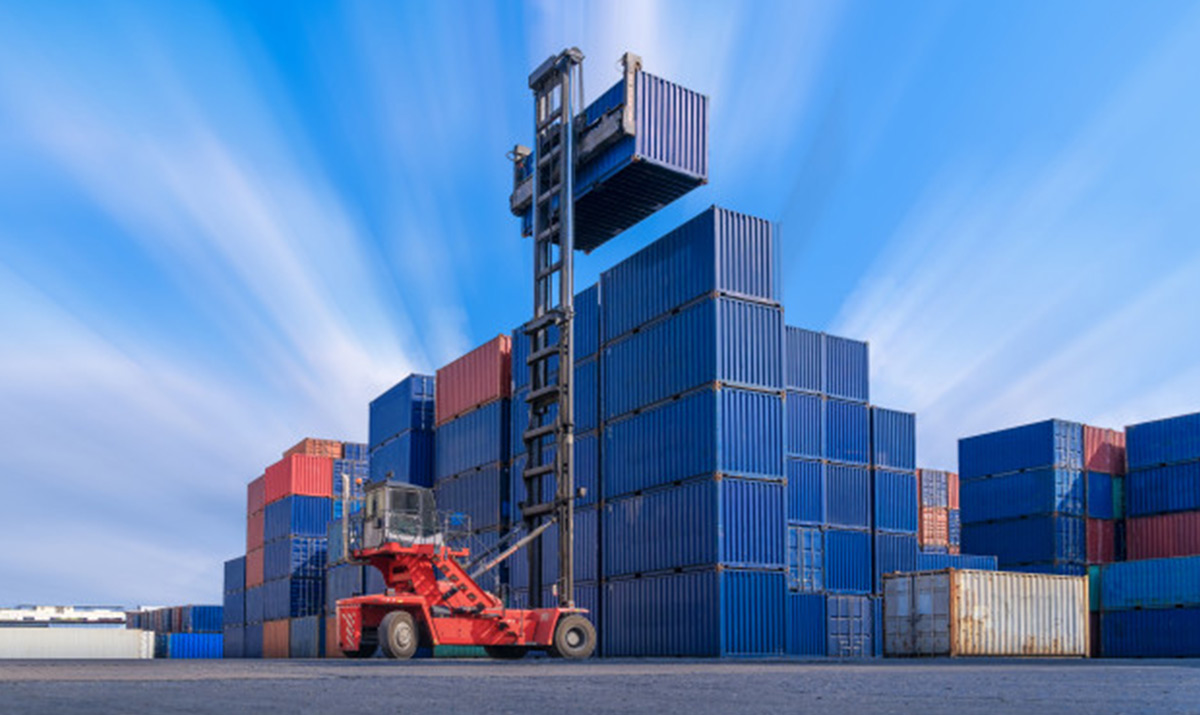What are the types of containers?
the continuous development of container transportation, in order to meet the needs of loading different types of goods, different types of containers have emerged. Let's sum it up with you today.
Classification by materials used
According to the main parts of the box (side wall, end wall, box top, etc.) what material is used, what material is called the container, according to the use of material classification, the container can be divided into three types:
(1) Aluminum alloy containers have the advantages of light weight, beautiful appearance, corrosion resistance, good elasticity, convenient processing, low processing and repair costs, and long service life; the disadvantages are high cost and poor welding performance;
(2) Steel containers have the advantages of high strength, firm structure, high weldability, good water tightness, and low price; the disadvantages are heavy weight and poor corrosion resistance;
(3) The glass steel container has the advantages of high strength, good rigidity, large content area, good heat insulation, anti-corrosion, chemical resistance, easy cleaning, and easy repair; the disadvantage is that it is heavy, easy to age, and the strength of the bolt is reduced.
classified by structure
According to the structure of the container can be divided into three categories:
(1) Inner Column (linterior post type container) and outer column containers (outsider post type container), mainly refers to aluminum alloy containers, inner column containers refer to side columns (or end columns) located inside the inverted wall or end wall; outer column containers refer to side columns (or end columns) located outside the inverted wall or end wall;
(2) Folding container (collapside container) means that the main components of the container (side walls, end walls and top) can be simply folded or disassembled, and can be easily recombined when used again;
(3)thin-shell container (monocoque container) is to form all the parts into a steel body. Its advantage is that it is light in weight and can adapt to the torsion that occurs without causing permanent deformation.
By Purpose of Useclassification
1,ordinary container
Ordinary containers, also known as dry containers (dry container) mainly to ship groceries, usually used to ship cultural goods, daily necessities, medicine, textiles, handicrafts, chemical products, hardware and electrical appliances, electronic machinery, instruments and machine parts. Such containers account for the total number of containers.70-80%. In addition to frozen goods, live animals, plants, in terms of size, weight, etc. suitable for container transport of goods, can use dry cargo containers.
2, refrigerated container
refrigerated containers (reefer container) external and built-in two. The temperature can be-60℃~ +30℃. The built-in container can start the refrigerator at will during transportation to keep the container at a specified temperature; while the external type must rely on the refrigerator equipped with special container vehicles, ships and special yards and stations to refrigerate. This box is suitable for transporting butter, chocolate, frozen fish, condensed milk, margarine and other items in summer.
3,open top container
open top container,also known as open-top containers, open-top cabinets (open top container), this kind of container does not have a top, but has a canopy made of canvas, plastic cloth or plastic-coated cloth supported by a folding top beam. Cranes can be used to load and unload goods from the top of the container. The top of the open-top container can be opened or has no fixed surface. The top of the container is covered with a waterproof cloth during shipment. Its watertight requirements are the same as those of dry cargo containers. Suitable for loading glass plates, steel products, machinery and other heavy goods.
4, frame container
frame container (flat rack container) There is no box top and sides, and it is characterized by loading and unloading from the side of the container. Heavy cargo is mainly carried, and it is also convenient to load livestock, as well as naked cargo such as steel, which can be exempted from external packaging. It can also facilitate the hoisting of large ultra-wide and ultra-high cargo.
5,Livestock Container.
Livestock Containers (pen container) The side of this box is made of metal mesh, which is well ventilated and easy to feed. It is a special container designed for the shipment of live animals such as cattle and horses.
6,tank container
Tank Container (tank container) is also called liquid container. It is a special container for the transportation of food, medicine, chemicals and other liquid goods. The structure is a liquid tank fixed in a metal frame. The International Standard Tank is a stainless steel pressure vessel mounted in a fastened external frame. Most of the tank liner is used.316stainless steel. Most tanks have steam or electric heating devices, inert gas protection devices, pressure relief devices and other optional equipment required for fluid transportation and handling.
7,Platform Container
Platform Container (platform container) The shape is similar to a railway flatbed car, which is a container with a high load-bearing floor and no superstructure. Suitable for loading overweight long cargo, length up6meters wide4meters, high4.5meters, the weight can reach40metric tons. And the two platform containers can be linked together, loaded80metric tons of goods, it is extremely convenient to ship cars in this box.
8,Ventilation Container
Ventilation Container (ventilated container) The box wall is provided4-6ventilation holes, the inner wall is coated with plastic layer, suitable for fresh vegetables and fruits and other goods that are afraid of heat and stuffy.
9,insulated container
insulated container (insulated container) There is a heat insulation layer in the box, and the top of the box has an inlet and outlet with adjustable angle. The outside air and wind can be used to adjust the temperature in the box, and it can be closed tightly for a certain period of time without being affected by the outside temperature. Suitable for shipment of temperature and humidity sensitive goods.
10,Bulk Container
Bulk containers (bulk container) is generally provided at the top2-3a small hatch for loading. There is a lifting frame at the bottom, which can be raised40° for unloading. This kind of box is suitable for grain, cement and other bulk cargo. If you want to carry out plant quarantine, but also in the box fumigation cabin steam washing.
11,Bulk Powder Container
Bulk Powder Containers (freeflowing bulk material container) is basically the same as the bulk box, but the nozzle and suction pipe are used for loading and unloading.
12,Hanging container
Hanging container (dress hanger container) Containers suitable for the shipment of clothing goods. With the development of international trade, the commodity structure is constantly changing, and there will be various types of special or multi-purpose containers in the future.



